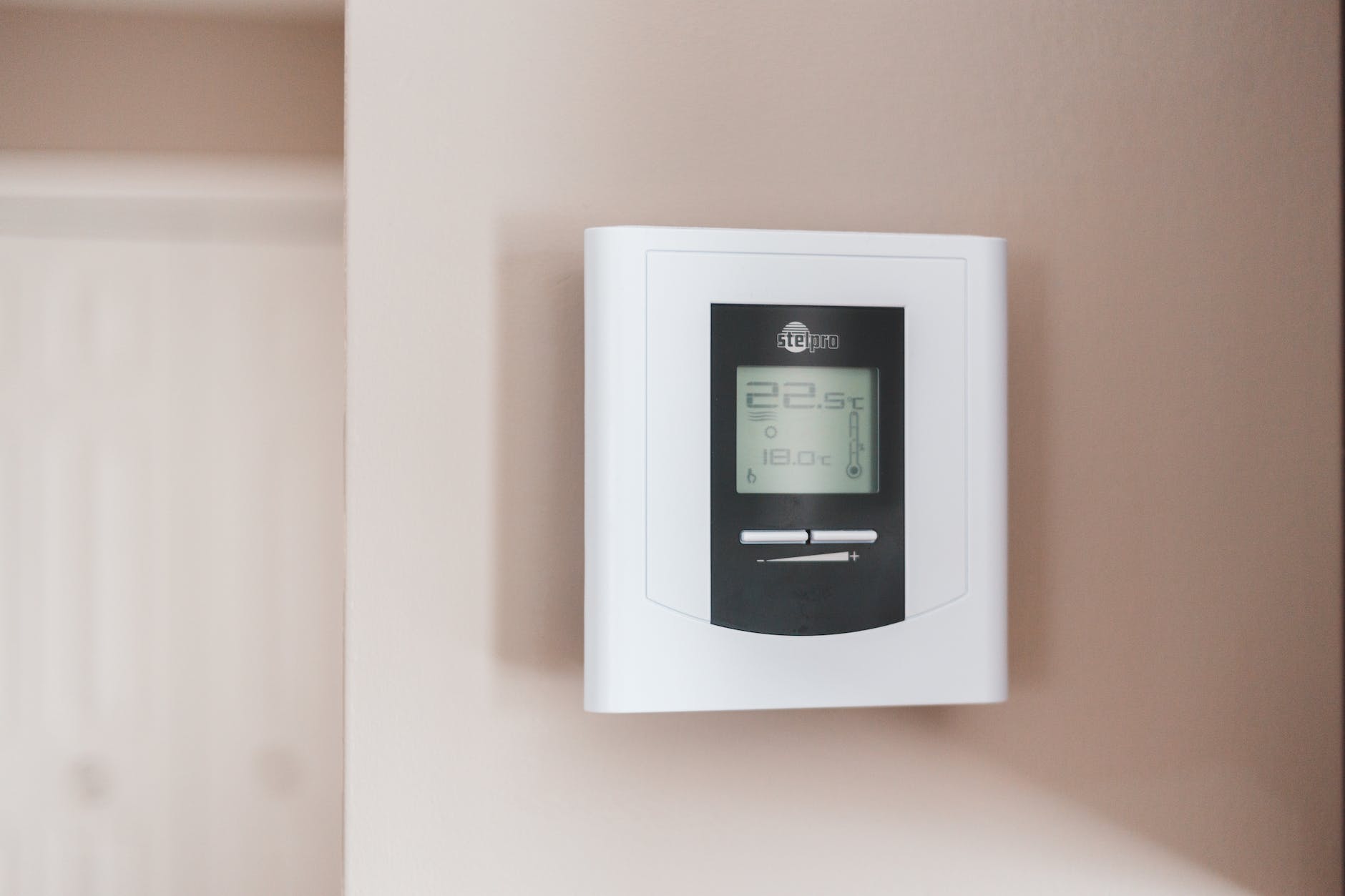
Photo by Erik Mclean on <a href="https://www.pexels.com/photo/white-thermostat-hanging-on-the-wall-7616651/" rel="nofollow">Pexels.com</a>
In this day and age, it is more important than ever to be mindful of our energy usage. The more we can do to conserve energy, the better off the environment will be – and the less money we’ll have to spend on our utility bills! In this blog post, we will discuss six tips for creating a more energy-efficient home. Some of these tips are small changes that you can make right now, while others may require a bit more effort or investment on your part. But no matter what, they will all help you reduce your home’s energy consumption and save money in the long run.
Get a Programmable Thermostat
This is one of the easiest ways to reduce your energy usage and save money. A programmable thermostat will allow you to set different temperatures for different times of day, so you’re not cooling or heating your home when nobody is there. According to the U.S. Department of Energy, you can save about $180 per year on your energy bills by using a programmable thermostat. So if you don’t already have one, be sure to pick one up!
Educate Your Family and Roommates about Energy Conservation
If you want to make a real impact on your energy usage, it’s important to involve the people who live with you. Talk to your family and roommates about conserving energy and explain why it’s important. For example, encourage them to turn off lights when they leave a room, unplug appliances that aren’t in use, and take shorter showers. You may also want to consider implementing some sort of reward system for everyone in the household. For example, whoever conserves the most energy in a month gets a prize at the end of the month. This will help make conservation more fun and exciting for everyone involved!
Use Power Strips
One of the biggest energy wasters in most homes is “phantom power.” This is the power that appliances and electronics use even when they are turned off. For example, if you have a TV that’s plugged into an outlet but not turned on, it’s still using a small amount of electricity. You can reduce your phantom power usage by plugging all of your electronics into power strips and then turning off the strip when you’re not using those devices. This way, they’re completely disconnected from the outlet and not using any electricity at all. According to Energy Star, eliminating phantom power can save you up to $100 per year on your energy bills! So it’s definitely worth taking the time to do this in your home.
Photo by Ashes Sitoula on Unsplash
Replace Incandescent Light Bulbs with CFLs or LEDs
If you’re still using traditional incandescent light bulbs in your home, now is the time to switch to more energy-efficient options. Compact fluorescent light bulbs (CFLs) use about 75% less energy than incandescents, and they last up to ten times longer. So you’ll save money on your energy bills and replacement bulbs over time. LED light bulbs are even more efficient than CFLs, although they tend to be a bit more expensive upfront. But if you can afford it, making the switch to LEDs is a great way to further reduce your energy usage. According to the U.S. Department of Energy, replacing just one incandescent bulb with an LED can save you $75 in energy costs over the lifetime of the bulb. So it’s definitely worth doing if you can!
Use Your Ceiling Fans
Ceiling fans can be a great way to reduce your energy usage in the summertime. By circulating the air in a room, they can make you feel cooler without having to lower the temperature on your thermostat. And since they use less energy than air conditioners, ceiling fans can help you save money on your energy bills. Be sure to use your ceiling fans properly, though. In the winter, run them in the reverse direction so that they push warm air down from the ceiling. And in the summer, make sure they’re blowing cool air directly at you for maximum efficiency.
Windows Replacement
If you have old, drafty windows in your home, it’s time to think about replacing them. Drafty windows can let a lot of heat escape in the winter and cool air escape in the summer, which means your heating and cooling system has to work harder to maintain a comfortable temperature. This wastes energy and drives up your utility bills. Installing new, energy-efficient windows can help solve this problem. Energy-efficient windows are made with special glass that helps keep heat inside in the winter and outside in the summer. They can also be coated with a low-emissivity (low-E) film that further improves their efficiency. According to Energy Star, replacing single-pane windows with energy-efficient ones can save you up to $465 per year on your energy bills. So, windows replacement is definitely a worthwhile investment!
Photo by Adeolu Eletu on Unsplash
There are lots of other ways to make your home more energy-efficient. But these are some of the easiest and most effective ways to get started. Implementing even a few of these tips can help you save money on your energy bills and make your home more comfortable at the same time.


